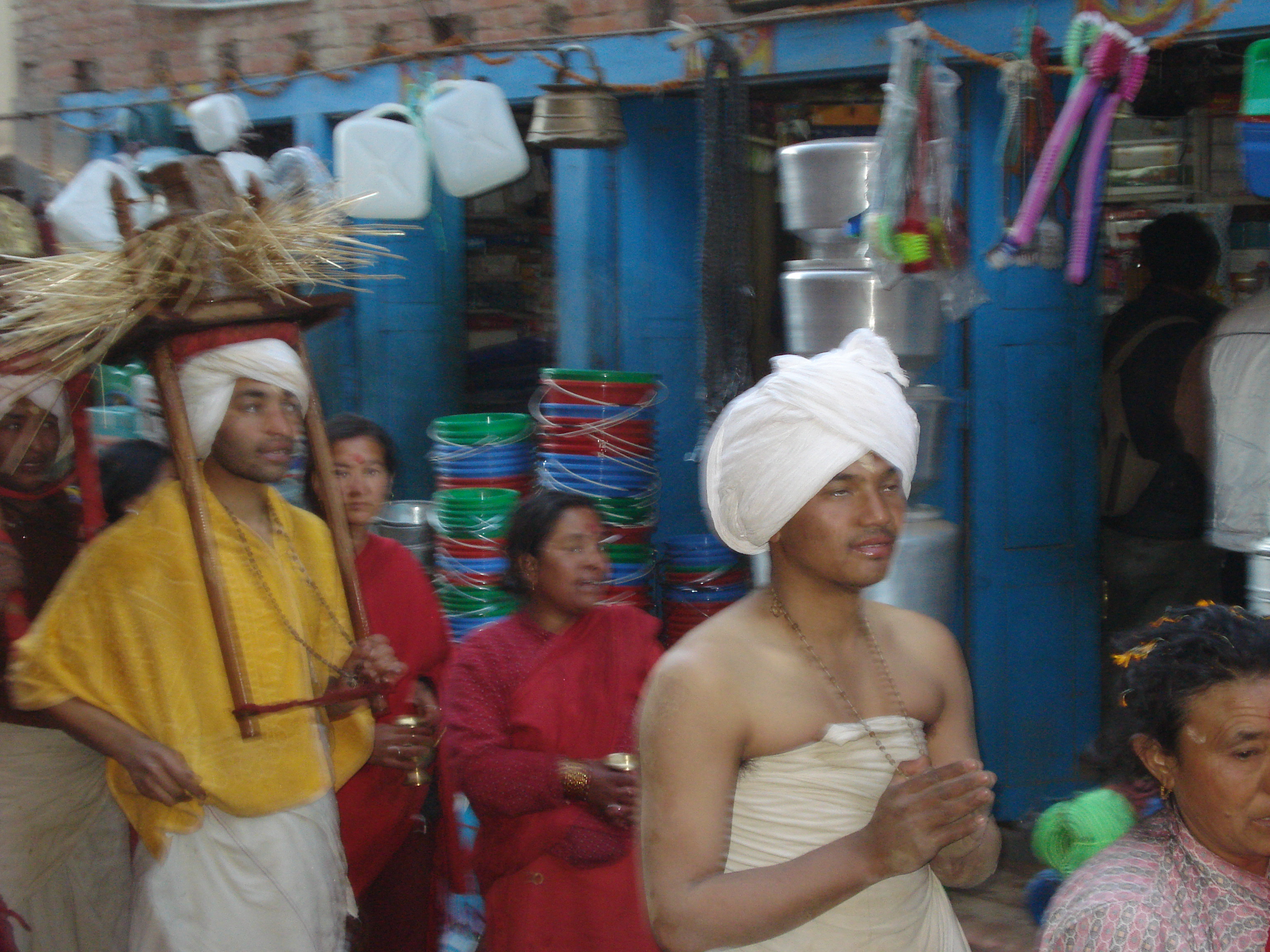Pohela (month) on:
[Wikipedia]
[Google]
[Amazon]
 Pwanhelā (
Pwanhelā (
Nepal Bhasa
Newar (), or Newari and known officially in Nepal as Nepal Bhasa, is a Sino-Tibetan languages, Sino-Tibetan language spoken by the Newar people, the indigenous inhabitants of Nepal Mandala, which consists of the Kathmandu Valley and surro ...
: 𑐥𑑂𑐰𑑃𑐴𑐾𑐮𑐵, प्वँहेला) is the third month in the Nepal Era
Nepal Sambat, also spelled as Nepala Sambata, (Nepal Bhasa: , Nepali: ) is the lunisolar calendar used by the Newari people of Nepal. The Calendar era began on 20 October 879 AD, with 1142 in Nepal Sambat corresponding to the year 2021–2022 ...
calendar, the national lunar calendar
A lunar calendar is a calendar based on the monthly cycles of the Moon's phases (synodic months, lunations), in contrast to solar calendars, whose annual cycles are based only directly on the solar year. The most commonly used calendar, the Gre ...
of Nepal
Nepal (; ne, नेपाल ), formerly the Federal Democratic Republic of Nepal ( ne,
सङ्घीय लोकतान्त्रिक गणतन्त्र नेपाल ), is a landlocked country in South Asia. It is mai ...
. The month corresponds to Pausha
Pausha ( sa, पौष ; hi, पूस ; ta, தை ), also called Paush, Poush, Pausa or Pushya, is the tenth month of the Hindu calendar, corresponding with December/January of the Gregorian calendar. In the Indian national calendar, Pausha ...
(पौष) in the Hindu lunar calendar
The Hindu calendar, Panchanga () or Panjika is one of various lunisolar calendars that are traditionally used in the Indian subcontinent and Southeast Asia, with further regional variations for social and Hindu religious purposes. They adopt a s ...
and roughly matches January
January is the first month of the year in the Julian and Gregorian calendars and is also the first of seven months to have a length of 31 days. The first day of the month is known as New Year's Day. It is, on average, the coldest month of the ...
in the Gregorian calendar
The Gregorian calendar is the calendar used in most parts of the world. It was introduced in October 1582 by Pope Gregory XIII as a modification of, and replacement for, the Julian calendar. The principal change was to space leap years dif ...
.
Pwanhelā begins with the new moon
In astronomy, the new moon is the first lunar phase, when the Moon and Sun have the same ecliptic longitude. At this phase, the lunar disk is not visible to the naked eye, except when it is silhouetted against the Sun during a solar eclipse.
...
and the full moon
The full moon is the lunar phase when the Moon appears fully illuminated from Earth's perspective. This occurs when Earth is located between the Sun and the Moon (when the ecliptic coordinate system, ecliptic longitudes of the Sun and Moon opp ...
falls on the 15th of the lunar month
In lunar calendars, a lunar month is the time between two successive syzygies of the same type: new moons or full moons. The precise definition varies, especially for the beginning of the month.
Variations
In Shona, Middle Eastern, and Europ ...
. The month is divided into the bright and dark fortnights which are known as Pwanhelā Thwa (पोहेला थ्व) and Pwanhelā Gā (पोहेला गा) respectively.
The sacred bathing festival of White Machindranath, the Bodhisattva
In Buddhism, a bodhisattva ( ; sa, 𑀩𑁄𑀥𑀺𑀲𑀢𑁆𑀢𑁆𑀯 (Brahmī), translit=bodhisattva, label=Sanskrit) or bodhisatva is a person who is on the path towards bodhi ('awakening') or Buddhahood.
In the Early Buddhist schools ...
of Compassion, is held on the 8th day of the bright fortnight at the courtyard of Jana Baha in Kathmandu
, pushpin_map = Nepal Bagmati Province#Nepal#Asia
, coordinates =
, subdivision_type = Country
, subdivision_name =
, subdivision_type1 = Province
, subdivision_name1 = Bagmati Prov ...
. On the full moon day known as Paush Purnimā, which is celebrated as Milā Punhi (मिला पुन्हि) in Nepal Mandala
Nepal Mandala ( ne, नेपाल मण्डल) is an ancient confederation on the Indian subcontinent, marked by cultural, religious and political boundaries which lies in present-day central Nepal. It consists of the Kathmandu Valley an ...
, the procession of the deity Changu Narayan
Changu Narayan is an ancient Hindu temple, located on a high hilltop that is also known as Changu or Dolagiri in Changunarayan Municipality of Bhaktapur District, Nepal. This hill is about 7 miles (or 12km) east of Kathmandu and a few miles n ...
is held in Kathmandu.
The month-long Swasthani
Shree Swasthani is a Hindu goddess ( Parameshwari) and is responsible for the good fortune, welfare and Power. She is mostly worshipped in Nepal in the holy month from poush Shukla purnima to magh Shukla purnima with dedicated rituals. Following ...
sacred story reciting festival also starts on the full moon day. In Sankhu
Sankhu (साखु) (alternative name: Sakwa (Nepal Bhasa: सक्व)) is the ancient Newar town located in the north-eastern corner of Kathmandu Valley which is about 17 km from the city center of Kathmandu. Sankhu was formerly divide ...
, a town 16 km to the east of Kathmandu, devotees fast and take daily holy dips in the Sali Nadi River throughout the month to mark the Swasthani festival. In another event, unusable clay pots are collected at market squares and broken into pieces.
Days in the month
Months of the year
References
{{reflist Months Nepali calendar Nepalese culture